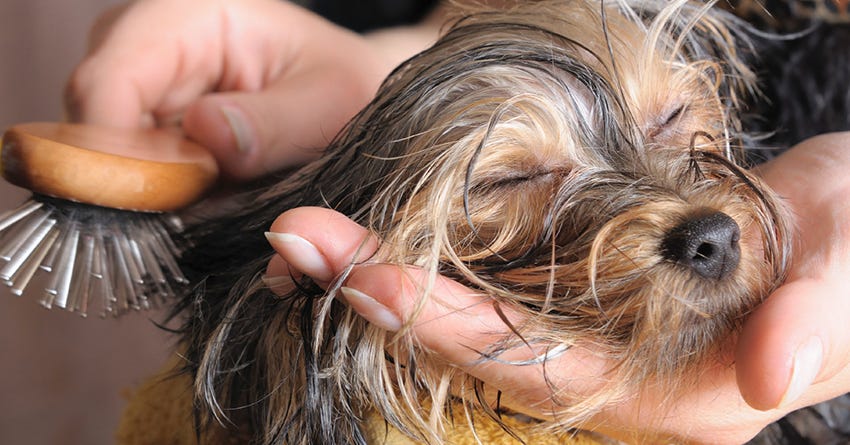Vet Advice on Caring for Your Pet's Skin and Coat

Proper grooming is an essential responsibility for any person in charge of caretaking a companion animal.
This doesn't mean only taking your dog to the groomer when his coat exudes a foul odor or when you cat is covered in hair mats. Grooming is an every-day obligation comparable to taking care of your own or your child's hair and skin.Why Does Your Pet Need Grooming?
Unlike humans, pets can’t care for their coat and skin in a manner thorough enough to meet the cleanliness standards desired by society. The majority of our companion canines and felines live predominately indoor lives, with some even sharing our beds and other favored relaxation locations, so there’s an expectancy that pets should adhere to similar trends for cleanliness as we humans. Besides appearing less-than-soiled, the close proximity in which we live to our pets raises valid hygienic concerns. Fur, nails, paw pads, and skin can collect feces, urine, environmental debris (dirt, dust, pollen, etc.), chemicals (cleaning products, pesticides, etc.) and other substances. This can lead to skin irritation (dermatitis), infection (pyoderma), or toxicity on a pet or person with whom contact is made. Certain areas of the body where liquid and solid wastes exit the body are also more prone to collecting substances. These include the prepuce (foreskin-like sheath covering the penis), vulva (external female genitalia) and perineum (area around the anus). Extra attention must be paid to these areas to keep the hair trimmed and free from undesirable accumulations. Additionally, the paws, limbs, and undercarriage more easily collect environmental debris or even parasitic organisms (ticks, fleas, etc.) and should be cleaned regularly.Shedding vs NonShedding Pets
All animals naturally lose hair and dander (skin flakes), but shedding dogs and cats lose larger volumes than their non-shedding counterparts. Pets that shed may feel, look, or smell cleaner than their non-shedding counterparts, but regular grooming is still needed. Non-shedding mixed and pure-breed cats (Cornish Rex, other non-shedding breeds, etc.) and non-shedding dogs (Bichon Frise, Poodle, etc.) still lose some hair and dander, but they do so in significantly reduced quantities. Therefore, non-shedding animals’ coat and skin can collect a variety of environmental materials or bodily fluids and develop malodor or a grimy appearance.
Frequency of Bathing and Brushing
Bathing and brushing remove hair, dander, organisms (bacteria, yeast, parasites, etc.), environmental allergens, and oil from the skin’s surface and are key components to skin and coat management. How frequently pets are bathed depends on their tendency to shed or not, the accumulation of environmental debris, or the need to manage conditions benefiting from regular bathing (seasonal or non-seasonal allergies, infection, etc.).When bathing, use a shampoo that is appropriate for your pet’s skin. Avoid human shampoo as it can alter a pet’s pH balance or contain ingredients that may be toxic to them (tea tree oil, etc.). Most cats and dogs do just fine with an all-purpose shampoo, but some pets benefit from products that remove scale, dissolve oil, treat infections (anti-bacterial, anti-fungal, etc.), flush follicles (salicylic acid, benzoyl peroxide, etc.), relieve discomfort (anesthetics, steroids, etc.), moisturize (omega fatty acids, etc.), and more. Brushing (or combing) should be done on a daily or every-few-day basis to remove hair and dander and to evenly distribute oil across body surfaces. Brushing is vitally important for non-shedding pure or mixed breeds, as they are more prone to hair matting if not regularly brushed or combed. A light touch should be used when brushing or combing, as your pet could show an aversion to grooming if the pressure from the bristles or tines on the skin surface is too great and becomes uncomfortable or even painful.


